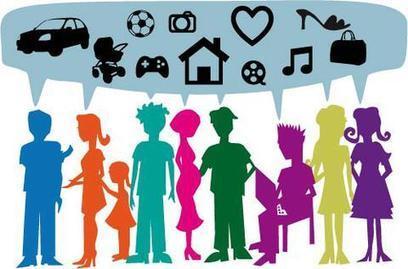The second quarter GDP figures for the United States are out. While the numbers are up, the long-term trend is not reassuring.
Global GDP has been growing at a declining rate since the Great Recession. While economists point to high energy costs, a decline in productivity, slower growth in the labor force, consumer and government debt, income inequality, and consumer aversion to spending, among other causes, there may be a more far-reaching trend, although still nascent, that explains some of the slowing growth of GDP. It’s called the zero marginal cost phenomenon, and it’s ushering a new economic system onto the world stage.
A Collaborative Commons is springing up alongside the conventional market and transforming the way we organize economic life – offering the possibility of dramatically increasing productivity, narrowing the income divide, democratizing the global economy and creating a more ecologically sustainable society. Although the Collaborative Commons is robust and growing faster than the traditional capitalist system, much of the economic activity does not show up in GDP figures.
What’s precipitating the great economic transformation is the unanticipated rise of the near zero marginal cost phenomenon. Private enterprises are continually seeking new technologies to increase productivity and reduce the marginal cost of producing and distributing goods and services so they can lower prices, win over consumers, and secure sufficient profit for their investors. (Marginal cost is the cost of producing additional units of a good or service, if fixed costs are not counted.) Economists never envisioned, however, a technology revolution that might unleash “extreme productivity,” bringing marginal costs to near zero, making information, energy, and many physical goods and services potentially nearly free, abundant, and no longer subject to market exchanges. That’s now beginning to happen.
Related: Investor Advisory – Market Volatility Set to Return
The near zero marginal cost phenomenon wreaked havoc across the “information goods” industries over the past decade, as millions of consumers turned prosumers and began using the Internet to produce and share their own music via file sharing services, their own videos on YouTube, their own knowledge on Wikipedia, their own news on social media, and even their own free e-books on the World Wide Web.
Meanwhile, six million students are currently enrolled in free Massive Open Online Courses (MOOCs) that operate at near zero marginal cost and are taught by some of the most distinguished professors in the world, and receiving college credits. The near zero marginal cost phenomenon brought the music industry to its knees, shook the film industry, forced newspapers and magazines out of business, crippled the book publishing market, and forced universities to rethink their business model.
Economists acknowledge the disruptive impact that near zero marginal cost has had on the information goods industries but, until recently, have argued that the productivity advances made possible by the digital economy would not pass across the firewall from the virtual world to the brick-and-mortar economy of energy, and physical goods and services. That firewall has now been breached.
A powerful new technology revolution is evolving that will allow millions—and soon hundreds of millions—of prosumers to also make and share physical goods at near zero marginal cost. The Communication Internet is converging with a fledgling renewable Energy Internet and nascent automated Logistics and Transportation Internet, creating a super Internet of Things (IoT) platform for a Third Industrial Revolution that is going to fundamentally alter the global economy in the first half of the 21st century.
Billions of sensors are being attached to every device, appliance, machine, and contrivance, connecting every thing with every human being in a neural network that extends across the entire economy. Enterprises and prosumers will be able to connect to the Internet of Things, and use Big Data and analytics to develop predictive algorithms that can speed efficiency, increase productivity, reduce the use of energy and other resources, and lower the marginal cost of producing and distributing physical things to near zero on a digitalized Collaborative Commons, just as we’ve done in producing and sharing information goods on the Internet.
Related: Why the CIA Fears the Internet of Things
For example, businesses and homeowners are already producing and sharing their own solar- and wind-generated green electricity. Even before the fixed costs of installing the harvesting technologies are paid back—as little as 2 to 8 years—the marginal cost of generating the green electricity is zero. The sun and wind are free. Similarly, startup businesses and homeowners are producing and sharing 3D-printed products, often using locally available recycled materials, at near zero marginal cost.
Forty percent of the U.S. population is already actively engaged in the collaborative sharing economy. This means the race to a zero marginal cost society and the shift from exchange value in the marketplace to sharable value on the Collaborative Commons, although still embryonic, is going to increasingly shrink GDP.
As the marginal cost of producing goods and services moves toward near zero in sector after sector, profits will narrow and GDP growth will continue to slow. And, with more goods and services becoming nearly free, fewer purchases will be made in the marketplace, again reducing GDP. Think free music on Pandora, free news on the Huffington Post, free videos on YouTube, free knowledge via Google and Wikipedia, free e-books, and now free solar- and wind-generated green electricity, and nearly free products on home-based 3D printers.
Even those items still being purchased in the exchange economy are becoming fewer in number as more people redistribute previously purchased goods in the sharable economy, extending their usable lifecycle, with a concomitant loss in GDP. ThredUp, Freecycle, Sparkbox Toys, and other redistribution networks on the digitalized Collaborative Commons allow millions of people to share clothes, toys, sports equipment, and countless other items at low or near zero marginal cost. 
Related: Companies Are Profiting from Your Data. Shouldn’t You, Too?
Many consumers are also opting for access over ownership of goods, preferring to pay only for the time they use an item, which translates to less GDP. For example, several million individuals in the United States are now using car sharing services like Uber and Lyft. Each car share vehicle eliminates 15 personally owned cars, reducing GDP.
Also, consider the meteoric rise in homesharing services. Airbnb members who rent out their apartments and houses to visitors at near zero marginal cost eliminated 1 million hotel nights in New York City alone between mid-2012 and mid-2013, again cutting down GDP.
Meanwhile, as automation, robotics, and AI replace millions of employees, an increasing number of those displaced workers are sharing their talents and skills on the Collaborative Commons, using alternative social currencies as forms of payment. Since their work is not compensated in dollars, it’s not counted in the GDP.
Concurrently, as prosumers proliferate and produce and consume their own green electricity and ever-more sophisticated 3D-printed products for nearly free, it means less GDP.
Related: Why There’s An ‘Airbnb’ for Just About Anything
The point is, while economic stagnation measured in terms of GDP may be occurring for various reasons, the headlong rush to a near zero marginal cost society could account for part of the sluggishness and will likely play an ever more impactful role in the future. What appears to conventional economists as economic stagnation may in fact be, to some small extent, a measure of the growing importance of a vibrant new economic paradigm that measures economic value in totally new ways.
Nowhere is the change in how we view the economy more apparent than in the growing global debate about how best to judge economic success. The conventional GDP metrics for measuring economic performance in the capitalist marketplace focus exclusively on itemizing the sum total of goods and services produced each year with no attempt to differentiate between negative and positive economic growth. An increase in expenditures for cleaning up toxic waste dumps, police protection and the expansion of prison facilities, military appropriations, and the like are all included in gross domestic product.

Today, the partial transformation of economic life from finance capital and the exchange of goods and services in markets to social capital and the sharing of goods and services in the Collaborative Commons is reshaping society’s thinking about how to evaluate economic performance. The European Union, the United Nations, and the Organization for Economic Co-operation and Development (OECD) have introduced new metrics for determining economic progress, emphasizing “quality of life” indicators rather than merely the quantity of economic output.
Related: An ‘Uber’ the Top Valuation Spells New Economic Risks
Social priorities, including educational attainment of the population, availability of health care services, infant mortality and life expectancy, the extent of environmental stewardship and sustainable development, protection of human rights, the degree of democratic participation in society, levels of volunteerism, the amount of leisure time available to the citizenry, the percentage of the population below the poverty level, and the equitable distribution of wealth are among the many new categories used by governments to evaluate the general economic welfare of society.
While producing and sharing virtual and physical goods at near zero marginal cost in the sharing economy on the Collaborative Commons vastly improves the economic quality life of millions of people, and decreases the amount of the earth’s resources needed to sustain a healthy society, it reduces the GDP at the same time. It’s likely that the GDP metric will decline in significance as an indicator of economic performance as millions of people shift at least part of their economic activity onto the mushrooming Collaborative Commons. By midcentury, quality of life indices on the Collaborative Commons are likely to be the primary litmus test for measuring economic well-being in a zero marginal cost society.
Jeremy Rifkin is the author of The Zero Marginal Cost Society: The Internet of Things, the Collaborative Commons, and the Eclipse of Capitalism. Rifkin is an advisor to the European Union and to heads of state around the world, and president of the Foundation on Economic Trends in Washington, D.C.
Top Reads from The Fiscal Times:





